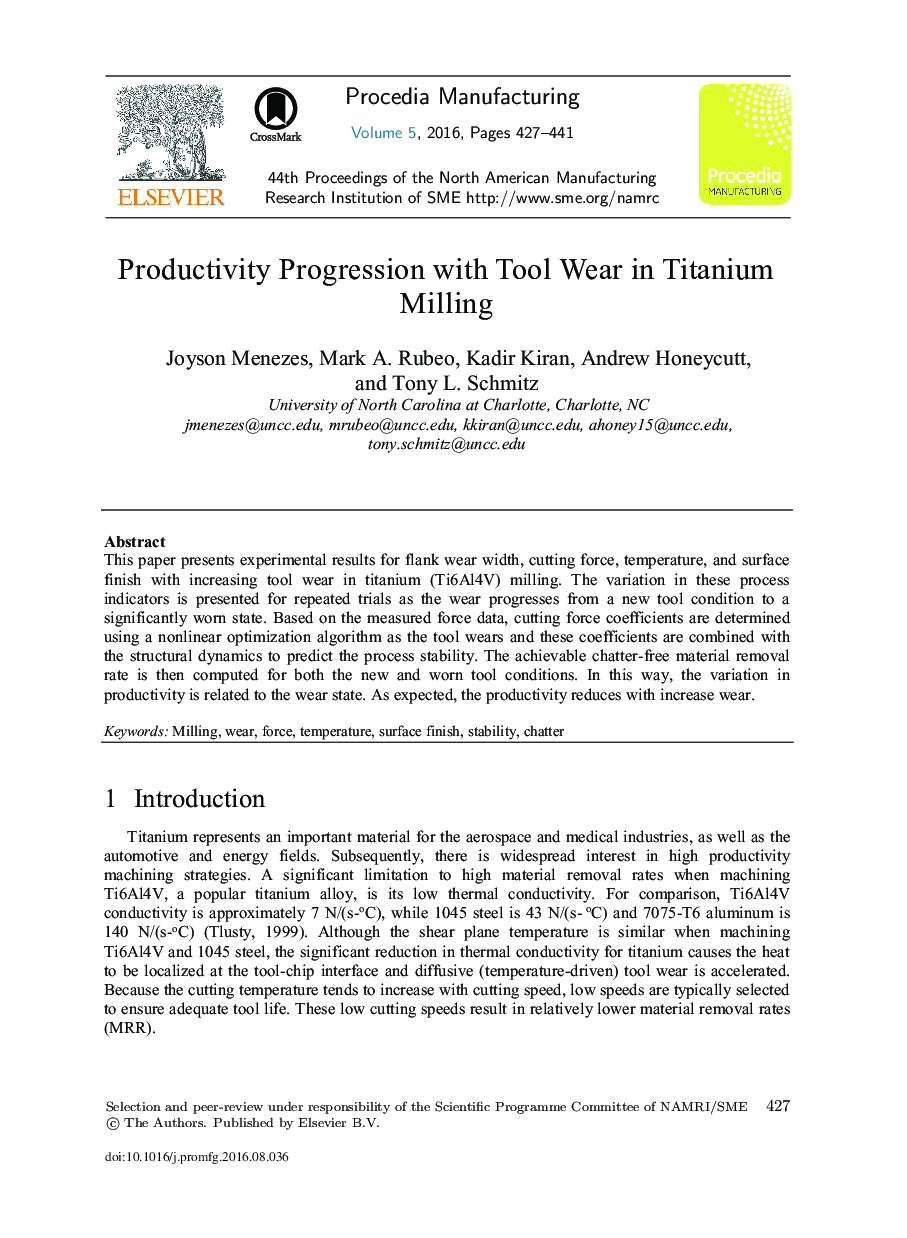| Article ID | Journal | Published Year | Pages | File Type |
|---|---|---|---|---|
| 5129036 | Procedia Manufacturing | 2016 | 15 Pages |
This paper presents experimental results for flank wear width, cutting force, temperature, and surface finish with increasing tool wear in titanium (Ti6Al4V) milling. The variation in these process indicators is presented for repeated trials as the wear progresses from a new tool condition to a significantly worn state. Based on the measured force data, cutting force coefficients are determined using a nonlinear optimization algorithm as the tool wears and these coefficients are combined with the structural dynamics to predict the process stability. The achievable chatter-free material removal rate is then computed for both the new and worn tool conditions. In this way, the variation in productivity is related to the wear state. As expected, the productivity reduces with increase wear.
